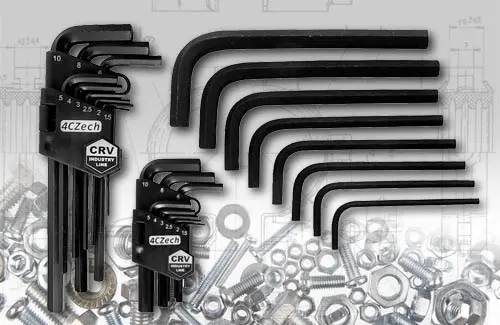The regular price is the current manufacturer's recommended price! FREE shipping for orders over EUR 41,67 within CZ+SK (PPLparcel)

Quite often we need to tighten or loosen something. Most of the time these are minor repairs, especially at home, where many joints are equipped with a hexagonal screw and are often more difficult to access. For example, when the screw head is recessed. And for these purposes (and not only these) a socket hexagon wrench, the so-called "inbus" is used. It is usually marked with the letter "H" or HEX (according to the hexagon) and is supplemented by a size number corresponding to the size in millimeters.
In practice, it is a very simple tool. It is a hexagonal metal rod, bent for easy handling, usually at a right angle, and loosening or tightening is based on the principle of a lever.
It can also be in the form of a bit, screwdriver, or possibly equipped with a "T-handle".
Another specific variant is a ball at the end of such a wrench. This will allow for better manipulation and insertion of the wrench even at an angle other than perpendicular to the screw axis.
These socket wrenches are usually used to tighten furniture joints and door handles, but they are also quite often used in the automotive industry.
However, the socket hex wrench can also appear in other than hexagonal variants. For example, as TORX. These are marked with the letter "T".
These wrenches are often available as a set of socket wrenches or a set of socket wrenches with a ball.
They can be sized from 1.5 to 10mm and can also be in an extended version.
Did you know that:
The abbreviation INBUS comes from the German name "Innensechskantschraube Bauer und Schaurte", translated as internal hexagonal screw Bauer and Schaurte? The wrench was patented under this name in 1936. However, we also encounter the name "Allen wrench", which is derived from a patent by the Allen company in the USA from 1943.

Other articles:
Jak vybrat vhodný pilník nejen do dílny
Průmyslové hlavice
Sady nářadí
Svinovací metry